Lanolin
Synonym(s):Adeps lanae;Wool fat;Wool Grease;Wool Wax
- CAS NO.:8006-54-0
- Empirical Formula: N/A
- Molecular Weight: 0
- MDL number: MFCD00081740
- EINECS: 232-348-6
- Update Date: 2025-12-26 12:07:08
What is Lanolin?
Toxicity
Studies have shown a positive association between atopic dermatitis and lanolin contact allergy . The prevalence of lanolin allergy is low (1.8%-2.5%) . Patch testing with lanolin is helpful in patients with dermatitis and suspected cosmetic allergy .
The acute dermal LD50 of lanolin oil was > 10 mL/kg for rabbits .
Chemical properties
yellow wax
Chemical properties
Lanolin is a pale yellow-colored, unctuous, waxy substance with a faint, characteristic odor. Melted lanolin is a clear or almost clear, yellow liquid.
Characteristics
Lanolin is a waxy substance that sheep naturally produce to protect their wool. Because lanolin's properties are similar to those of the sebum (oil) secreted by human skin, it is a popular ingredient in moisturizers, hair care products, and soaps.
The Uses of Lanolin
lanolin (hydrogenated) is a lanolin derivative.
The Uses of Lanolin
lanolin is an emollient with moisturizing properties and an emulsifier with high water–absorption capabilities. It forms a network on the skin’s surface rather than a film, as is the case with petrolatum (Vaseline.). While long-term studies associate a low incidence of allergic reactions to lanolin, it remains a controversial ingredient based on a potential pesticide content and potential comedogenicity. There is a move among high-quality lanolin manufacturers to produce low-pesticide lanolin and among high-quality cosmetic formulators and manufacturers to use the purist form available. Lanolin’s comedogenicity potential is increasingly debated as some researchers believe it to be inaccurate, especially when lanolin is used in an emulsion. Lanolin is a sheep’s wool derivative formed by a fat-like viscous secretion of the sheep’s sebaceous glands. Some consider it a natural wax.
The Uses of Lanolin
lanolin wax is a lanolin derivative. This is the semisolid fraction of lanolin obtained by physical means from whole lanolin.
Background
Lanolin is a yellow fat obtained from sheep's wool. It is used as an emollient, cosmetic, and pharmaceutic aid . The US federal code of regulations states that lanolin in the concentration range of 12-50% may be included in over the counter skin ointments .
Lanolin is the purified, secreted product of the sheep sebaceous glands . Lanolin primarily consists of long-chain waxy esters, or sterol esters, that lack glycerides. For this reason, it is also called wool wax or wool grease. Lanolin is used in the protection, treatment, and cosmetic enhancement of human skin. Its hydrophobic properties can help protect skin against infections or skin irritation, as it helps seal in moisture that is already present in the skin .
Lanolin is used as an active ingredient in over the counter topical products such as ointments, lubricants, lotions and facial cosmetics. Lanolin is also frequently used in protective baby skin treatment and for sore nipples in breastfeeding mothers , .
Indications
Used as a skin protectant, and to relieve dryness and irritation of the skin , . Helps prevent and treat diaper dermatitis .
What are the applications of Application
Lanolin is a waxy fatty substance secreted by sebaceous glands of wooly land animals
Production Methods
Lanolin is a naturally occurring wax-like material obtained from
the wool of sheep, Ovis aries Linne′ (Fam. Bovidae).
Crude lanolin is saponified with a weak alkali and the resultant
saponified fat emulsion is centrifuged to remove the aqueous phase.
The aqueous phase contains a soap solution from which, on
standing, a layer of partially purified lanolin separates. This
material is then further refined by treatment with calcium chloride,
followed by fusion with unslaked lime to dehydrate the lanolin. The
lanolin is finally extracted with acetone and the solvent is removed
by distillation.
Definition
A yellowish viscous substance obtained from wool fat. It contains cholesterol and terpene compounds, and is used in cosmetics, in ointments, and in treating leather.
Definition
lanolin: An emulsion of purified wool fat in water, containing cholesteroland certain terpene alcoholsand esters. It is used in cosmetics.
Pharmaceutical Applications
Lanolin is widely used in topical pharmaceutical formulations and
cosmetics.
Lanolin may be used as a hydrophobic vehicle and in the
preparation of water-in-oil creams and ointments. When mixed
with suitable vegetable oils or with soft paraffin, it produces
emollient creams that penetrate the skin and hence facilitate the
absorption of drugs. Lanolin mixes with about twice its own weight
of water, without separation, to produce stable emulsions that do
not readily become rancid on storage.
Pharmacokinetics
Lanolin treats cracked, dry, irritated skin and minor burns. It prevents and treats sore nipples during breastfeeding , . Protects chafed skin or minor skin irritations due to various causes , .
Side Effects
Most emollients can be used safely and effectively without side effects. However, burning, stinging, redness or irritation may occur. Rare and very serious allergic reactions are abnormal changes in the skin (e.g., whitening/softening/wetness from over-moisturisation), rashes, itching/swelling (especially on the face/tongue/throat), severe dizziness, and difficulty breathing. If any discomfort occurs, contact your doctor immediately.
Safety
Lanolin is widely used in cosmetics and a variety of topical pharmaceutical formulations.
Although generally regarded as a nontoxic and nonirritant
material, lanolin and lanolin derivatives are associated with skin
hypersensitivity reactions, and the use of lanolin in subjects with
known sensitivity should be avoided. Other reports suggest that
‘sensitivity’ arises from false positives in patch testing.However,
skin hypersensitivity is relatively uncommon; the incidence of
hypersensitivity to lanolin in the general population is estimated to
be around 5 per million.
Sensitivity is thought to be associated with the content of free
fatty alcohols present in lanolin products rather than the total
alcohol content.The safety of pesticide residues in lanolin
products has also been of concern. However, highly refined
‘hypoallergenic’ grades of lanolin and grades with low pesticide
residues are commercially available.
Metabolism
Not Available
Storage
Lanolin may gradually undergo autoxidation during storage. To inhibit this process, the inclusion of butylated hydroxytoluene is permitted as an antioxidant. Exposure to excessive or prolonged heating may cause anhydrous lanolin to darken in color and develop a strong rancidlike odor. However, lanolin may be sterilized by dry heat at 150°C. Ophthalmic ointments containing lanolin may be sterilized by filtration or by exposure to gamma irradiation.
Incompatibilities
Lanolin may contain prooxidants, which may affect the stability of certain active drugs.
Regulatory Status
Included in the FDA Inactive Ingredients Database (ophthalmic, otic, topical, and vaginal preparations). Included in nonparenteral medicines licensed in the UK. Included in the Canadian List of Acceptable Non-medicinal Ingredients.
Properties of Lanolin
| Melting point: | 38-40 °C |
| Density | 0.932-0.945 g/cm3(Temp: 15 °C) |
| Flash point: | 209 °C |
| storage temp. | Sealed in dry,Room Temperature |
| solubility | chloroform: 0.1 g/mL, clear to faintly turbid (<29 NTU), strongly yellow-green |
| form | Adhering Crystals or Powder |
| color | White to yellow |
| Odor | Characteristic |
| Water Solubility | Soluble in ether, petroleum ether, chloroform and petroleum benzene. Sparingly soluble in ethanol. Insoluble in water. |
| Merck | 14,5358 |
| Dielectric constant | 4.2(Ambient) |
| EPA Substance Registry System | Lanolin (8006-54-0) |
Safety information for Lanolin
Computed Descriptors for Lanolin
Lanolin manufacturer
New Products
4,4-Difluoropiperidine hydrochloride tert-butyl 9-methoxy-3-azaspiro[5.5]undecane-3-carboxylate Indole Methyl Resin N-Isopropylurea N,N-Dicyclohexylcarbodiimide(DCC) MELDRUMS ACID 5-METHYLISOXAZOLE-4-CARBOXYLIC ACID Magnessium Bis glycinate Zinc ascorbate 1-bromo-2-butyne 2-acetamidophenol 9(10H)-anthracenone Erythrosin B, 4-Piperidinopiperidine 2-((4-morpholinophenylamino) (methylthio) methylene) malononitrile 2,4-dihydroxybenzaldehyde 3-(4-morpholinophenylamino)-5-amino-1H-pyrazole-4-carbonitrile Methyl 2-methylquinoline-6-carboxylate 2,6-dichloro-4-nitropyridine 4-Bromo-2-chlorobenzonitrile 2-(benzylamino)acetic acid hydrochloride 4-(tert-Butoxycarbonylamino)but- 2-ynoic acid 3,4-dihydro-2H-benzo[b][1,4]dioxepine 1-Phenyl-1-cycloprppanecarboxylicacidRelated products of tetrahydrofuran








You may like
-
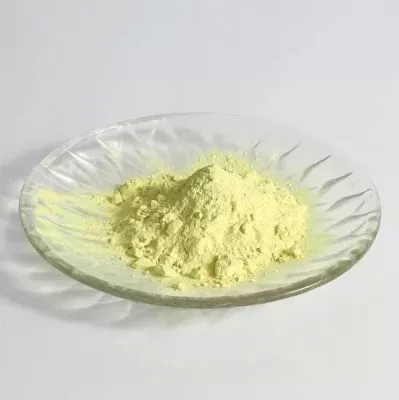 Lanolin Wax 98%View Details
Lanolin Wax 98%View Details -
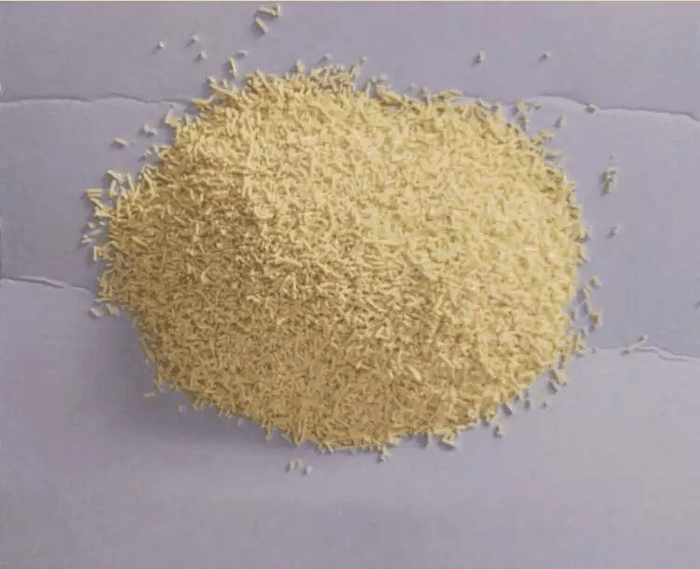 Hydrous lanolin 98%View Details
Hydrous lanolin 98%View Details -
 Lanolin (SQ) CAS 8006-54-0View Details
Lanolin (SQ) CAS 8006-54-0View Details
8006-54-0 -
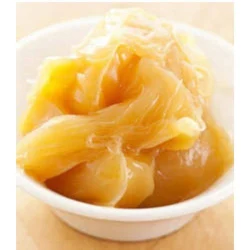 Lanolin Anhydrous, Packaging Type: PacketsView Details
Lanolin Anhydrous, Packaging Type: PacketsView Details
8006-54-0 -
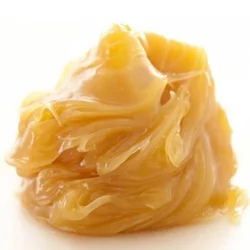 Lanolin Anhydrous, For pharma gradeView Details
Lanolin Anhydrous, For pharma gradeView Details
8006-54-0 -
 Lanolin AnhydrousView Details
Lanolin AnhydrousView Details
8006-54-0 -
 Lanolin Anhydrous PharmaView Details
Lanolin Anhydrous PharmaView Details
8006-54-0 -
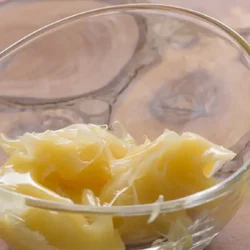 Lanolin Anhydrous IP BP grade, Purity: 100% Pure, wax typeView Details
Lanolin Anhydrous IP BP grade, Purity: 100% Pure, wax typeView Details
8006-54-0
